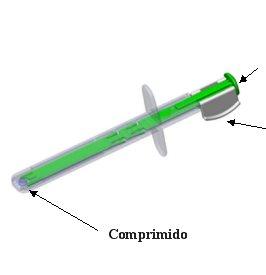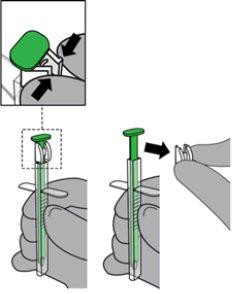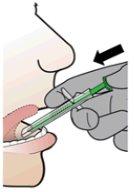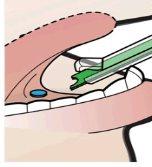

ДЗУВЕО 30 микрограмм сублингвальные таблетки

Спросите врача о рецепте на ДЗУВЕО 30 микрограмм сублингвальные таблетки

Инструкция по применению ДЗУВЕО 30 микрограмм сублингвальные таблетки
Введение
Инструкция: информация для пользователя
Дзувео 30микрограммов сублингвальная таблетка
суфентанил
Прочитайте внимательно всю инструкцию перед началом использования этого препарата, поскольку она содержит важную информацию для вас.
- Сохраните эту инструкцию, поскольку вам может потребоваться перечитать ее.
- Если у вас есть какие-либо вопросы, проконсультируйтесь с вашим врачом, фармацевтом или медсестрой.
- Если вы испытываете побочные эффекты, проконсультируйтесь с вашим врачом, фармацевтом или медсестрой, даже если это побочные эффекты, которые не указаны в этой инструкции. См. раздел 4.
Содержание инструкции
- Что такое Дзувео и для чего он используется
- Что вам нужно знать перед началом использования Дзувео
- Как использовать Дзувео
- Возможные побочные эффекты
- Хранение Дзувео
- Содержание упаковки и дополнительная информация
1. Что такое Дзувео и для чего он используется
Активным веществом Дзувео является суфентанил, который принадлежит к группе мощных обезболивающих препаратов, называемых опиоидами.
Суфентанил используется для лечения внезапной умеренной или сильной боли у взрослых в медицинском учреждении, таком как больница.
2. Что вам нужно знать перед началом использования Дзувео
Не используйте Дзувео
- Если вы аллергичны к суфентанилу или любому другому компоненту этого препарата (перечисленному в разделе 6).
- Если у вас есть тяжелые проблемы с легкими или дыханием.
Предостережения и меры предосторожности
Проконсультируйтесь с вашим врачом или медсестрой перед началом использования Дзувео. Сообщите вашему врачу или медсестре перед лечением, если:
- У вас есть любое расстройство, которое влияет на ваше дыхание (например, астма, свистящее дыхание или трудности с дыханием). Поскольку Дзувео может повлиять на ваше дыхание, во время лечения ваш врач или медсестра будут контролировать ваше дыхание.
- У вас есть черепно-мозговая травма или опухоль мозга.
- У вас есть проблемы с сердцем и кровообращением, особенно медленный сердечный ритм, нерегулярные сердечные сокращения, низкий кровяное давление или низкое артериальное давление.
- У вас есть умеренные или тяжелые проблемы с печенью или тяжелые проблемы с почками, поскольку эти органы влияют на то, как ваш организм расщепляет и удаляет препарат; у вас есть аномально медленные кишечные движения.
- У вас есть заболевания желчного пузыря или поджелудочной железы.
- Вы или любой член вашей семьи когда-либо имели зависимость от алкоголя, рецептурных препаратов или незаконных веществ («зависимость»).
- Вы курите.
- У вас когда-либо были проблемы, связанные с состоянием духа (депрессия, тревога или расстройство личности) или вы были лечены психиатром за другие психические заболевания.
Этот препарат содержит суфентанил, который является опиоидом. Повторное использование обезболивающих опиоидов может привести к тому, что препарат станет менее эффективным (организм привыкает к ним). Кроме того, это может привести к зависимости и злоупотреблению, что может привести к потенциально смертельной передозировке. Важно проконсультироваться с вашим врачом, если вы беспокоитесь о том, что можете стать зависимыми от Дзувео.
Проконсультируйтесь с вашим врачом ВО ВРЕМЯ использования Дзувео, если:
- Вы испытываете боль или усиление чувствительности к боли (гипералгезия), которая не реагирует на более высокую дозу препарата, как назначил врач.
Что вам нужно знать перед началом использования Дзувео
Расстройства дыхания, связанные со сном
- Дзувео может вызывать расстройства дыхания во время сна, такие как апноэ во сне (затруднения дыхания во время сна) и гипоксемия, связанная со сном (низкий уровень кислорода в крови). Эти симптомы могут включать затруднения дыхания во время сна, ночные пробуждения из-за трудностей с дыханием, трудности с поддержанием сна или чрезмерную сонливость днем. Если вы или другой человек наблюдаете эти симптомы, свяжитесь с вашим врачом. Ваш врач может рассмотреть возможность снижения дозы.
Дети и подростки
Дзувео не должен использоваться у детей и подростков младше 18 лет.
Другие препараты и Дзувео
Сообщите вашему врачу, если вы принимаете, недавно принимали или можете принимать любой другой препарат. В частности, сообщите вашему врачу, если вы принимаете любой из следующих:
- Кетоконазол, используемый для лечения грибковых инфекций, этот препарат может повлиять на то, как ваш организм расщепляет суфентанил.
- Любой препарат, который может вызвать сонливость (седативный эффект), такой как таблетки для сна, препараты для лечения тревоги (например, бензодиазепины), седативные или другие обезболивающие препараты, поскольку они могут увеличить риск тяжелых проблем с дыханием, комы и смерти.
- Препараты для лечения депрессии, известные как ингибиторы моноаминоксидазы (ИМАО). Эти препараты не должны приниматься в течение 2 недель до или во время приема Дзувео.
- Препараты для лечения эпилепсии, боли нейрологического происхождения или тревоги (габапентин и прегабалин), поскольку они увеличивают риск передозировки опиоидов и респираторной депрессии и могут поставить под угрозу жизнь пациента.
- Препараты для лечения депрессии, известные как селективные ингибиторы обратного захвата серотонина (СИОЗС) и ингибиторы обратного захвата серотонина и норадреналина (ИОЗС). Не рекомендуется использовать эти препараты одновременно с Дзувео.
- Другие препараты, которые принимаются сублингвально (препараты, которые помещаются под язык, где они растворяются) или препараты, которые влияют на ваш рот (например, нистатин, жидкость или таблетки, которые держатся во рту для лечения грибковых инфекций), поскольку не было изучено их влияние на Дзувео.
- Опиоидные препараты, обычно назначаемые по рецепту (например, морфин, кодеин, фентанил, гидроморфон, оксикодон).
- Препараты, используемые для лечения гипертонии или стенокардии (боли в груди), известные как антагонисты кальция или бета-блокаторы, такие как дилтиазем и нифедипин.
Использование Дзувео с алкоголем
Не пейте алкоголь во время использования Дзувео. Это может увеличить риск тяжелых проблем с дыханием.
Беременность и лактация
Если вы беременны или кормите грудью, считаете, что можете быть беременной или планируете стать беременной, проконсультируйтесь с вашим врачом перед приемом этого препарата.
Дзувео не должен использоваться во время беременности или у женщин детородного возраста, которые не используют эффективные методы контрацепции.
Дзувео проникает в грудное молоко и может вызвать побочные эффекты у ребенка. Не рекомендуется кормить грудью во время приема Дзувео.
Вождение и использование машин
Дзувео влияет на вашу способность управлять транспортными средствами или использовать машины, поскольку он может вызвать сонливость, головокружение или нарушения зрения. Не управляйте транспортными средствами и не используйте машины, если вы испытываете любой из этих симптомов во время или после лечения суфентанилом. Вы должны управлять транспортными средствами и использовать машины только после того, как прошло достаточно времени после последней дозы Дзувео.
Дзувео содержит натрий
Этот препарат содержит менее 1 ммоль натрия (23 мг) на таблетку; это означает, что он практически «не содержит натрия».
3. Как использовать Дзувео
Этот препарат должен быть введен врачом или медсестрой с помощью устройства для одноразового введения. Не вводите этот препарат самостоятельно.
Дзувео должен использоваться только в медицинском учреждении, таком как больница. Только врачи с опытом использования мощных обезболивающих препаратов, таких как суфентанил, и знанием их влияния на вас, особенно на ваше дыхание (см. «Предостережения и меры предосторожности» выше), могут назначать его.
Рекомендуемая доза составляет одну сублингвальную таблетку 30 микрограммов, которую можно вводить не более чем один раз в час. Медицинский работник введет сублингвальную таблетку с помощью одноразового аппликатора. Аппликатор поможет медицинскому работнику поместить таблетку под ваш язык. Таблетки растворяются под языком и не должны жеваться или глотаться, поскольку они не будут эффективны для обезболивания, если не смогут раствориться под языком. Не ешьте и не пейте ничего и говорите как можно меньше в течение 10 минут после введения каждой дозы.
После получения дозы не вводите другую дозу в течение как минимум одного часа. Максимальная суточная доза составляет 720 микрограммов в день (24 таблетки в день).
Дзувео не должен использоваться более 48 часов.
После лечения медицинский персонал утилизирует аппликатор в соответствии с требованиями.
Если вы примете больше Дзувео, чем необходимо
Симптомы передозировки включают тяжелые проблемы с дыханием, такие как медленное и поверхностное дыхание, потеря сознания, чрезвычайно низкое кровяное давление, коллапс и мышечная жесткость. Если эти симптомы начинают появляться, немедленно сообщите об этом врачу или медсестре.
Если у вас есть какие-либо другие вопросы о использовании этого препарата, проконсультируйтесь с вашим врачом или медсестрой.
4. Возможные побочные эффекты
Как и все препараты, этот препарат может вызывать побочные эффекты, хотя не все люди испытывают их.
Тяжелые побочные эффекты
Самыми тяжелыми побочными эффектами являются тяжелые проблемы с дыханием, такие как медленное и поверхностное дыхание, которые даже могут привести к остановке дыхания.
Если вы испытываете любой из вышеуказанных побочных эффектов, немедленно сообщите об этом врачу или медсестре.
Очень частые побочные эффекты(могут возникать более чем у 1 из 10 человек):
Тошнота, рвота или желание рвоты и ощущение жара в общем.
Частые побочные эффекты (могут возникать до 1 из 10 человек)
- Неспособность или трудность со сном, тревога или путаница, головокружение.
- Головная боль, сонливость, ощущение сна.
- Ускорение сердечного ритма, высокое кровяное давление, низкое кровяное давление.
- Низкие уровни кислорода в крови, ощущение боли в нижней части горла, медленное и поверхностное дыхание.
- Сухость во рту, газы, запор, изжога или рефлюкс.
- Аллергические реакции, зуд кожи.
- Мышечные спазмы и судороги.
- Неспособность мочиться.
- Этот препарат также может вызывать изменения в уровнях красных кровяных клеток, белых кровяных клеток, кальция, альбумина, калия и натрия в крови, которые можно обнаружить только с помощью анализа крови. Если вам предстоит сдать анализ крови, убедитесь, что ваш врач знает, что вы принимаете этот препарат.
Редкие побочные эффекты (могут возникать до 1 из 100 человек)
- Воспаление легких, покраснение и воспаление глаз, воспаление горла.
- Накопления жира под кожей.
- Неспособность контролировать уровень сахара в крови (диабет), повышение уровня холестерина.
- Агитация, отсутствие интереса или эмоций, отсутствие энергии, дезориентация, эйфория, галлюцинации или видение вещей, которые не существуют, нервозность.
- Проблемы с координацией движений, мышечные спазмы, тремор или чрезмерная агитация, усиление рефлексов, ощущение жара, ощущение обморока, необычное ощущение кожи (ползание), онемение в общем, усталость, забывчивость, мигрень, напряженная головная боль.
- Расстройства зрения, боль в глазах.
- Замедление сердечного ритма, нерегулярные сердечные сокращения, стенокардия или другие боли в груди.
- Высокое кровяное давление или низкое кровяное давление при стоянии, покраснение кожи.
- Медленное или трудное дыхание (даже во сне), носовое кровотечение, икота.
- Боль в груди и трудности с дыханием, вызванные тромбом в легких, жидкостью в легких, свистящим дыханием.
- Диарея, отрыжка, воспаление слизистой оболочки желудка или гастрит, газы, рефлюкс, рвота, боль в желудке или дискомфорт в желудке.
- Появление пузырей, чрезмерное потоотделение, кожная сыпь, сухость кожи, онемение рта или лица.
- Боль в спине, груди или других частях тела, боль в конечностях.
- Трудности с мочеиспусканием, сильный запах мочи, боль при мочеиспускании, почечная недостаточность.
- Отек, неприятные ощущения в груди, озноб и слабость (отсутствие энергии).
Этот препарат также может вызывать изменения в уровнях тромбоцитов (которые помогают свертыванию крови), магния, белков, сахара, жиров, фосфатов и плазмы в крови, которые можно обнаружить только с помощью анализа крови. Если вам предстоит сдать анализ крови, убедитесь, что ваш врач знает, что вы принимаете этот препарат.
Частота не известна (не может быть оценена на основе доступных данных):
- Тяжелые аллергические реакции (анafilактический шок), судороги, кома, сужение зрачков, покраснение кожи.
- Синдром отмены, который может включать симптомы, такие как агитация, тревога, мышечная боль, бессонница, потоотделение и зевота.
Сообщение о побочных эффектах
Если вы испытываете любой побочный эффект, проконсультируйтесь с вашим врачом или медсестрой, даже если это возможные побочные эффекты, которые не указаны в этой инструкции. Вы также можете сообщить об этом напрямую через национальную систему уведомления, включенную в приложение V. Сообщая о побочных эффектах, вы можете внести свой вклад в предоставление более полной информации о безопасности этого препарата.
5. Хранение Дзувео
Храните этот препарат вне поля зрения и досягаемости детей. Ваш врач или медсестра будут следить за тем, чтобы:
- этот препарат не использовался после истечения срока годности, указанного на этикетке и упаковке после «CAD». Срок годности - последний день месяца, указанного.
- Хранить в оригинальной упаковке для защиты от света и кислорода.
- Не использовать этот препарат, если вы заметили признаки повреждения.
Препараты не должны выбрасываться в канализацию или мусор. Ваш медицинский работник утилизирует упаковку и препарат, который вам не нужен, в соответствии с правилами больницы. Таким образом, вы поможете защитить окружающую среду.
6. Содержание упаковки и дополнительная информация
Состав Дзувео
- Активным веществом является суфентанил. Каждая сублингвальная таблетка содержит 30 микрограммов суфентанила (в виде цитрата).
- Другими компонентами являются маннитол (Е421), дикальцийфосфат, гипромеллоза, кроскармеллоза натрия, кармин индиго (Е132), стеариновая кислота и стеарат магния.
Внешний вид продукта и содержание упаковки
Дзувео - это плоская сублингвальная таблетка синего цвета с округлыми краями. Она имеет диаметр 3 мм и поставляется в одноразовом аппликаторе (помеченном как [сублингвальная таблетка]). Аппликатор, содержащий таблетку, упакован в пакет.
Каждый пакет содержит один аппликатор и одну таблетку суфентанила 30 микрограммов. Каждая упаковка содержит 5 или 10 пакетов.
Возможно, что только некоторые размеры упаковок будут доступны.
Владелец разрешения на маркетинг и производитель
Laboratoire Aguettant
1, rue Alexander Fleming
69007 Lyon
Франция.
Дата последнего обновления этой инструкции:

Пульсатор
Блокировочный механизм
- Удалите белый блокировочный механизм с зеленого пульсатора, нажимая на обе стороны одновременно, чтобы снять его с пульсатора. Утилизируйте блокировочный механизм.

- Попросите пациента, если возможно, прикоснуться языком к нёбу.
- Аккуратно приложите одноразовый аппликатор (ОА) к зубам или губам пациента.
- Поместите кончик ОА под язык пациента и направьте его вниз к полу рта пациента. ПРИМЕЧАНИЕ: Избегайте прямого контакта слизистой оболочки с кончиком ОА.

- Нажмите на зеленый пульсатор, чтобы выпустить таблетку в сублингвальное пространство пациента и подтвердите правильное положение таблетки.

- Страна регистрации
- Активное вещество
- Требуется рецептДа
- Производитель
- Информация носит справочный характер и не является медицинской рекомендацией. Перед приемом любых препаратов проконсультируйтесь с врачом. Oladoctor не несет ответственности за медицинские решения, принятые на основе этого контента.
- Аналоги ДЗУВЕО 30 микрограмм сублингвальные таблеткиФорма выпуска: ИНЪЕКЦИОННЫЙ РАСТВОР, 5 микрограмм/млАктивное вещество: sufentanilПроизводитель: Medochemie LimitedТребуется рецептФорма выпуска: ИНЪЕКЦИОННЫЙ РАСТВОР, 50 микрограмм/млАктивное вещество: sufentanilПроизводитель: Medochemie LimitedТребуется рецептФорма выпуска: ИНЪЕКЦИОННЫЙ РАСТВОР, 5 микрограмм/млАктивное вещество: sufentanilПроизводитель: Altan Pharmaceuticals SaТребуется рецепт
Аналоги ДЗУВЕО 30 микрограмм сублингвальные таблетки в других странах
Лучшие аналоги с тем же действующим веществом и терапевтическим эффектом.
Аналог ДЗУВЕО 30 микрограмм сублингвальные таблетки в Польща
Аналог ДЗУВЕО 30 микрограмм сублингвальные таблетки в Україна
Врачи онлайн по ДЗУВЕО 30 микрограмм сублингвальные таблетки
Консультация по дозировке, побочным эффектам, взаимодействиям, противопоказаниям и продлению рецепта на ДЗУВЕО 30 микрограмм сублингвальные таблетки – по решению врача и с учетом местных правил.














